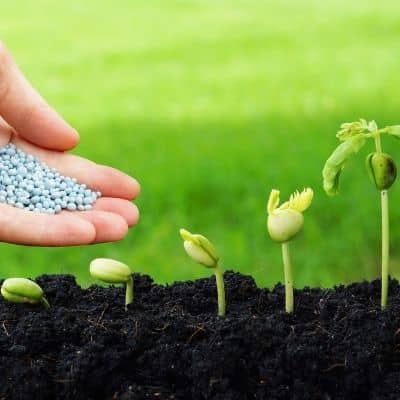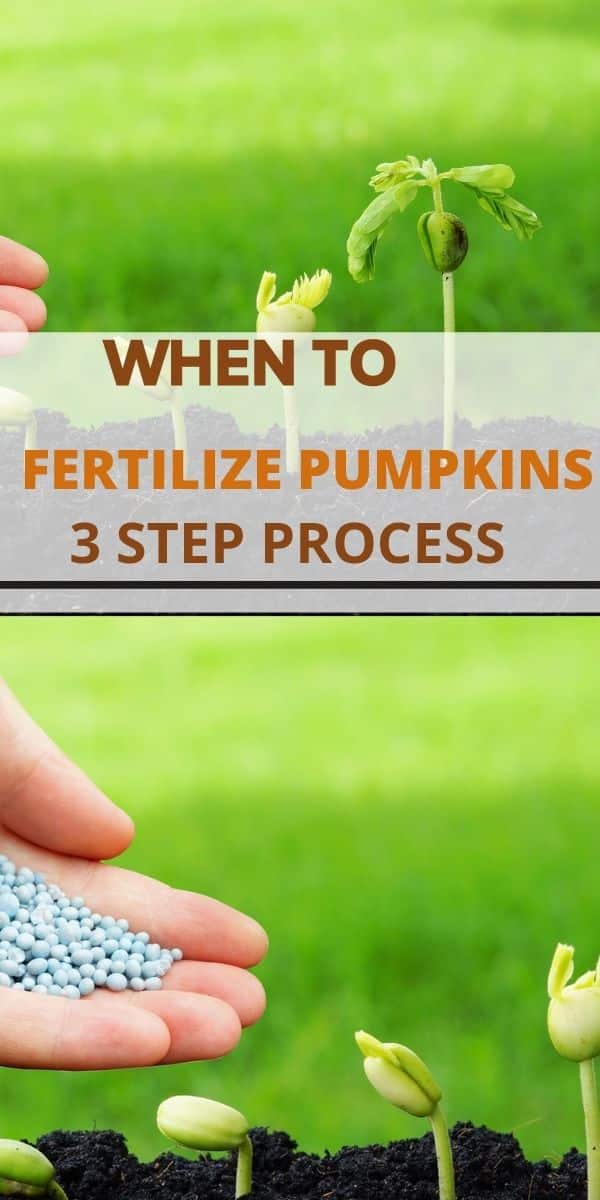Are you a keen pumpkin grower? Do you know when to fertilize pumpkins? It is absolutely essential you nourish these or you will be left with a poor harvest. Find out the best fertilizer for pumpkins at each stage of their growth.
Anyone knows they key to growing great pumpkins is how you treat them, before you plant the seeds right up until you harvest them!
I have tons of advice for planting pumpkin seeds and how to grow pumpkins to keep you right! However one thing I possibly have not yet covered in great detail is the pumpkin fertilizer schedule, i.e what type of fertilizer is best at a certain stage.
It is crucial you know what to put on your soil and near your pumpkins for a bountiful harvest! If you apply the wrong fertilizer you can kiss goodbye to having any produce.
Pumpkins (Cucurbit pepo) aren’t perennials like apple trees- you’ve just got one summer to get fertilization right. When it comes to fertilizer, your pumpkins need various quantities of nitrogen, potassium, and phosphorus in order to thrive.
Not only that, but you need to conduct a soil test as well before you transplant seedlings or sow seeds in your garden. A soil test determines the soil's pH level as well as the amount of nitrogen, potassium, and phosphorus that’s in the soil. .
First Stage of Prepping your Soil for Pumpkin Fertilizer - What happens when my soil is too acidic?
After your soil test, if you find that your soil has a pH of 5.5 or less, amend it with compost or add lime to your soil. If your soil has a pH of 7.5, you’ll need to make it less alkaline and more acidic, you need to do this with granular sulfur or peat moss.
Pumpkin Fertilizer Schedule - The three steps of pumpkin fertilization
Follow the guidelines below that give you detailed information about the phases of pumpkin growth and how to fertilize pumpkins at all three stages.
Step One : Pre-Flowering with Details on Pumpkin Fertilizer Dose
Before your vine begins to flower in the first 55 days or so, you need to ensure that your plant has a sufficient amount of nitrogen.
Nitrogen is a crucial element to the early growth of a plant due to it’s chlorophyll compound, which is the responsible compound for a plant’s green colored leaves, stems, and vines. This compound absorbs energy from the sun of which it then uses it to create sugars to feed the plant (photosynthesis). Lack of fertilizer can result in yellow pumpkin leaves
When you test your soil, if you find that Nitrogen is at a deficit, add blood meal in a ratio of 12-0-0 according to the instructions on the package. Nitrogen helps young plants produce healthy and leafy green growth, foliage, and vines once it becomes fully established.
If your soil test finds that the other elements are at a deficit as well, apply a balanced ratio of 10-10-10 with NPK fertilizer.
Thus, satisfying your pumpkin's needs for nitrogen and meet its heavy needs on phosphorus and potassium during its second and third growing stages.
Feed your plant every 2-3 weeks until 10-15 days before flowering, and 40-45 days after germination.
Step Two : Flowering
Your plant’s vines will begin to produce blooms around day 55 after germination. During this phase, your plant will require phosphorus. This component is essential as it contains adenosine triphosphate (ATP) which provides the plant with the energy it needs to form buds and fruit.
If the plant lacks phosphorus it won’t bloom. Even if the plant does bloom, its buds may abort before opening, and plants may abort pollinated fruits if they lack the energy to grow bigger.
At about 40-45 days after germination before blooms begin to appear, stop adding extra nitrogen and begin adding bone meal fertilizer instead.
For best results, add bone meal fertilizer according to its package instructions every 1-2 weeks to the soil. Just keep an eye out for over-fertilizing with phosphorous. You’ll know if the plant’s leaves begin to yellow around its edges- stop applying phosphorus.
Once your plant begins developing small fruits on its vine, begin to focus on increasing potassium in your fertilizer.
Step Three : Fruiting
This is another crucial stage in pumpkin growth as we have almost got our divine fruit in our hands! It is so cruical you know the best pumpkin fertilizer dose to maximise your produce. Once your pumpkins start growing, don’t ease up too much on the phosphorus- but make sure that you’re giving them enough potassium.
Potassium is also critical when it comes to ATP, as it helps regulate the amount of carbohydrates and water that’s stored in your plant’s tissues- stimulating the production of protein and starch in the gourds.
You can fertilize your pumpkin with a ratio of 5-10-10 fertilizer that’s high in both potassium and phosphorus. Alternatively, continue to use plant bone meal and add seaweed powder in addition for a source of K.
Mix a teaspoon of the seaweed powder into a gallon of water and leave it overnight to dissolve in the water. The following day, water your pumpkins with the water and follow the same process once a week. This ensures that your plants have enough potassium to grow into fleshy, big, tasty pumpkins.
If you notice cracks in your pumpkins, or if they’re growing too quickly, it’s a sign of over-fertilization with potassium. In that case, hold off on future potassium applications.
Keep a check on your produce until it is time to harvest pumpkins.





Leave a Reply